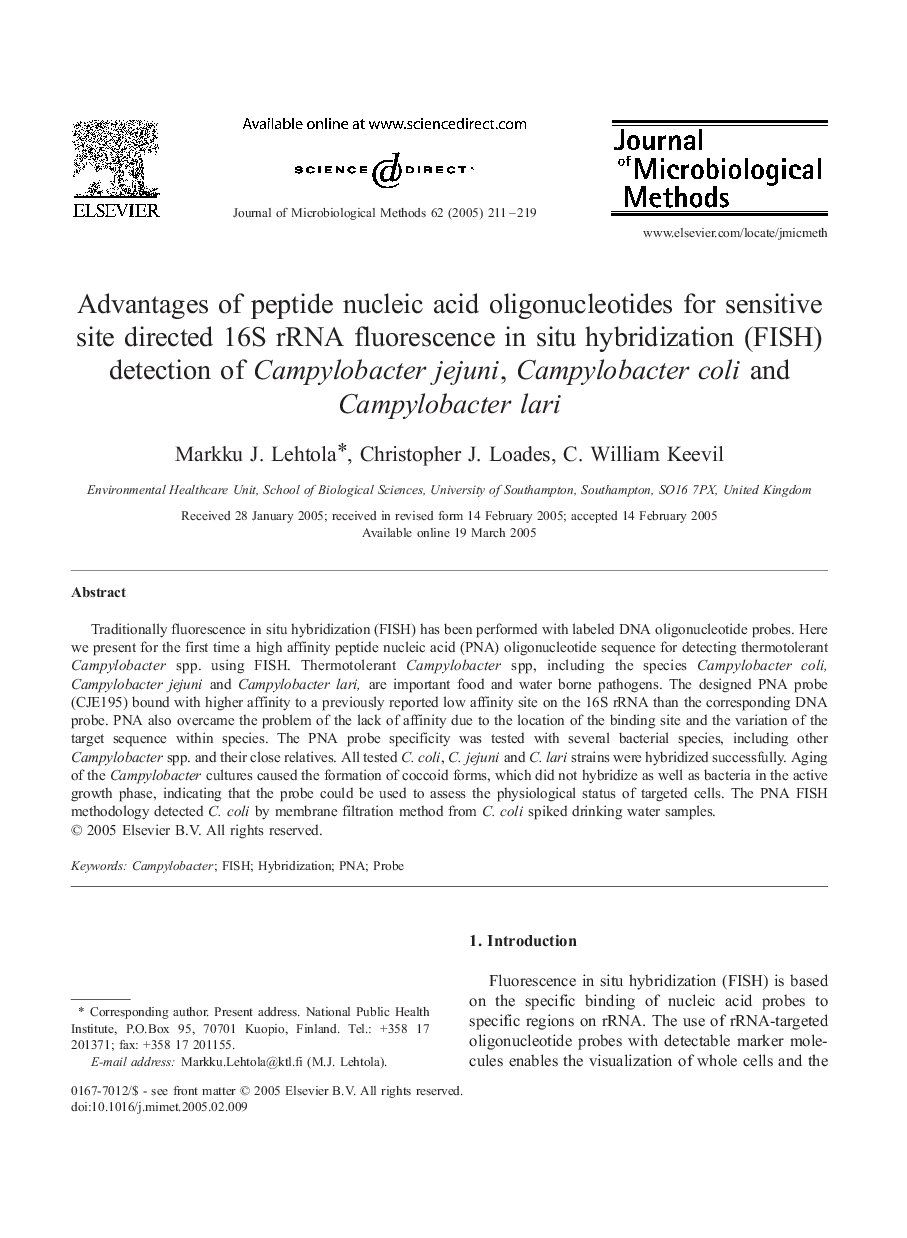| کد مقاله | کد نشریه | سال انتشار | مقاله انگلیسی | نسخه تمام متن |
|---|---|---|---|---|
| 10889891 | 1081549 | 2005 | 9 صفحه PDF | دانلود رایگان |
عنوان انگلیسی مقاله ISI
Advantages of peptide nucleic acid oligonucleotides for sensitive site directed 16S rRNA fluorescence in situ hybridization (FISH) detection of Campylobacter jejuni, Campylobacter coli and Campylobacter lari
دانلود مقاله + سفارش ترجمه
دانلود مقاله ISI انگلیسی
رایگان برای ایرانیان
موضوعات مرتبط
علوم زیستی و بیوفناوری
بیوشیمی، ژنتیک و زیست شناسی مولکولی
بیوتکنولوژی یا زیستفناوری
پیش نمایش صفحه اول مقاله

چکیده انگلیسی
Traditionally fluorescence in situ hybridization (FISH) has been performed with labeled DNA oligonucleotide probes. Here we present for the first time a high affinity peptide nucleic acid (PNA) oligonucleotide sequence for detecting thermotolerant Campylobacter spp. using FISH. Thermotolerant Campylobacter spp, including the species Campylobacter coli, Campylobacter jejuni and Campylobacter lari, are important food and water borne pathogens. The designed PNA probe (CJE195) bound with higher affinity to a previously reported low affinity site on the 16S rRNA than the corresponding DNA probe. PNA also overcame the problem of the lack of affinity due to the location of the binding site and the variation of the target sequence within species. The PNA probe specificity was tested with several bacterial species, including other Campylobacter spp. and their close relatives. All tested C. coli, C. jejuni and C. lari strains were hybridized successfully. Aging of the Campylobacter cultures caused the formation of coccoid forms, which did not hybridize as well as bacteria in the active growth phase, indicating that the probe could be used to assess the physiological status of targeted cells. The PNA FISH methodology detected C. coli by membrane filtration method from C. coli spiked drinking water samples.
ناشر
Database: Elsevier - ScienceDirect (ساینس دایرکت)
Journal: Journal of Microbiological Methods - Volume 62, Issue 2, August 2005, Pages 211-219
Journal: Journal of Microbiological Methods - Volume 62, Issue 2, August 2005, Pages 211-219
نویسندگان
Markku J. Lehtola, Christopher J. Loades, C. William Keevil,